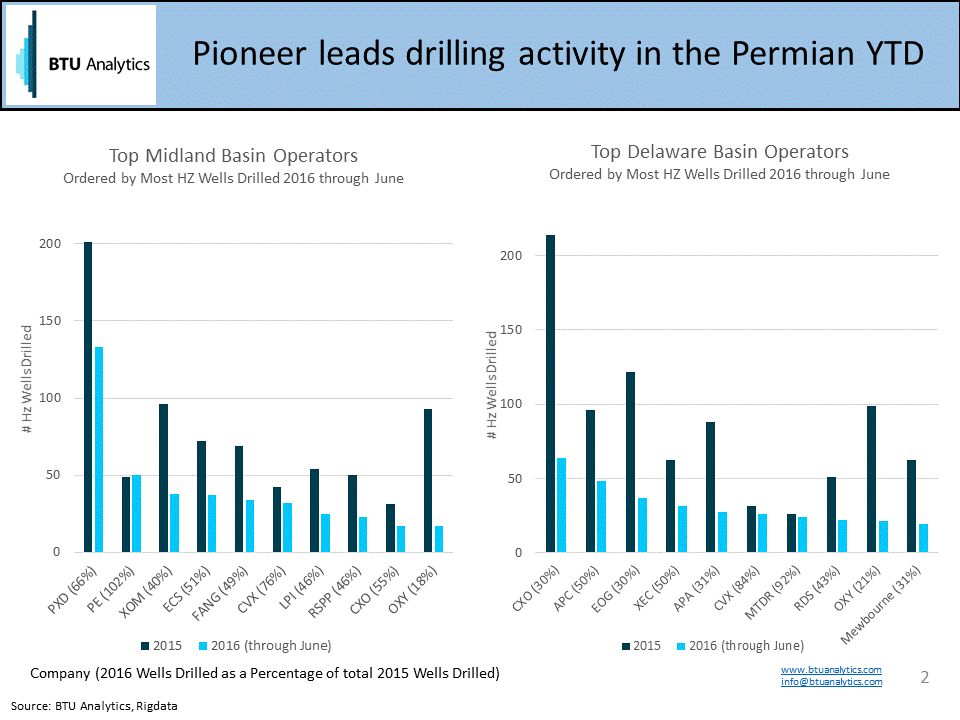The US has added 36 rigs over the past 6 weeks, with nearly 60% of these located in the Permian Basin. While total rigs are still well below the peak reached in 2014, these additions mark a shift in the trend following 40 consecutive weeks of declines. This may signal that an inflection point has been reached as the market returns to balance and producers start to gain confidence. Given that the majority of recent rig additions have occurred in the Permian, we’ll take a closer at where drilling activity has picked up within the region, who has been drilling, and what this may mean for production going forward.
In conjunction with rig additions, the amount of horizontal wells drilled in the Permian has increased from May to June. While drilling activity had been relatively flat and resilient in the basin through much of 2015, the amount of horizontal wells drilled began to decrease during the beginning of this year. Initial data for the month of June (always subject to revision) shows this has started to bounce back, as seen in the figure below.
The Permian covers a relatively large area across Texas and New Mexico, and can be split between the Delaware Basin to the west and the Midland Basin to the east. The Midland Basin has recently seen more activity relative to the Delaware. The number of horizontal wells drilled in Midland County, Texas, in particular, reached a new record high of over 50 wells and accounts for the majority of the increase seen from May to June.

Within the Midland Basin, this increase in activity is predominately due to Pioneer Natural Resources (NYSE: PXD), which has been actively working to prove out acreage in the Wolfcamp and Lower Spraberry. They are on track to drill over 200 horizontal wells in 2016, in line with their recent guidance. In the Delaware, Concho (NYSE: CXO), Anadarko (NYSE: APC) and EOG (NYSE: EOG) continue to be top operators. Most of the top operators within both regions are on track to drill a similar number of horizontal wells in 2016 as 2015. We are halfway through the year and most have drilled at or above 50% of the total amount of wells they drilled in 2015.

Increased drilling activity is a positive signal for the basin, but still only paints part of the picture from a production standpoint, given the backlog of DUCs that producers can bring online as the oil market continues to move back into balance. The Permian will be a key region for US oil supply as the market continues to recover over the later part of 2016 and into 2017. For our view on production from the Permian and how it fits into the overall US supply picture, request a free sample of BTU Analytics’ Upstream Outlook.









